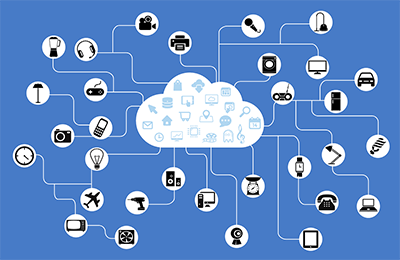 Editor's Note: Bruce Orcutt is Senior Vice President of Product Marketing at ABBYY.
Editor's Note: Bruce Orcutt is Senior Vice President of Product Marketing at ABBYY.
Digital technology is changing many industries and the transportation and logistics industry is no exception. Whether you are a traffic coordinator at a carrier, a shipping clerk for a manufacturer, or an invoice processing analyst at a 3PL – you have experienced the benefits of digital transformation in your personal lives and expect the same type of transactional experience in your professional roles.
However, 3PL vendors continue to deal with issues such as manual data entry, driver shortages, proliferation of data from Internet-of-Things (IoT) devices, warehouse and on-truck capture devices interfacing into legacy systems, and the rise of emerging geographic markets with antiquated paper-based systems. Simultaneously, relationships are becoming more transient and volatile as competition heats up. Google's same day delivery, Amazon's drone package delivery testing, self-driving trucks, and the inevitable Uber for Trucking with supply chain load sharing are examples of disruptions. The influx of new market entrants are armed with new technologies and unburdened by legacy systems.
In addition to new market entrants, smart trucking applications threaten to level the playing field with driver matching, driverless autonomous or semiautonomous freight trucking, real-time asset maintenance tracking, capacity load sharing and instant payment. Innovation is continuing at a rapid pace.
Customer Experience is your Secret Weapon
Switching costs today are relatively low and dissatisfied customers will simply go elsewhere if they are not delighted with your level of engagement. Improving and empowering the customer experience is now your competitive weapon, and can be achieved by accelerating transactions via self-service tools and providing enhanced process visibility.
Customer engagement applications are now strategic tools for enhancing experiences. Customer onboarding, trace and tracking, omnichannel invoice validation and processing are all tools that can delight your customers, but need to be tightly integrated into backend systems-of-record to be successful.
Maximize your IT Investments
Your existing business processes are the backbone of your business. You've worked hard to support a high volume of digital transactions and likely can support a diverse set of documentation sources through self-service portals which can handle fax, email and various formats such as EDI, ANSI X12, EDIFact, Web Services, spreadsheets, and CSV. The goals of your IT investments were to achieve speed of execution and agility to reduce existing business latencies and inefficiencies. However, there are still remnants of the analog world that don't quite fit with your new digital strategy.
Documents still drive and support most 3PL business processes. Bills of lading, customs declarations, claims documents, proof of delivery, driver logs, catering and fuel receipts, carrier invoices and expenses all have to get captured in order to commence a process. Even if a relatively small percentage of your logistic data inputs are still paper, it slows the process, increases errors and will require people to execute the mundane and repetitive tasks of manual data entry, scan, track and trace, monitoring shipment schedules, invoicing validation and credit collections.
Improving the Workflow
Your workflows may often start with a physical document that needs to be converted into a digital file so it can be processed, validated and inserted into your business process. Mobile capture is a natural channel for initiating a process. Most customers have the ultimate capture device in the palm of their hands in the form of their smartphones. Customers can be empowered to capture and submit logistics documents in their preferred channel whether that be their smartphone, a self-service web portal, email, fax, scanner to an FTP site or the cloud.
Having a digitized and efficient workflow will also provide customers transparency into the logistics process so they have feedback into how their transactions are progressing and what, if any, additional documentation is required to move the process forward. Users want to feel like they are in control of the process.
Critical to a dynamic workflow is incorporating intelligent capture that automates the process of classifying document types. Being able to automatically recognize, separate and distinguish between different document types (invoices, contracts, orders, delivery notices, split POs, etc.) is an important step. Once automatically classified, your business process will be able to orchestrate where the document needs to be routed.
Auto-classification of document types into classes and sub-classes delivers a tremendous business value. It reduces the cognitive tasks and burden on workers thereby minimizing operational labor costs, minimizing errors, improving worker satisfaction and accelerating the transaction.
Yet, customers don't want to program complex sets of rules to learn how to classify documents. Instead, your capture engine should be intelligent enough to analyze a corpus of documents with minimal tuning and automatically understand exactly what document classes and data feeds need to be extracted for your custom business process.
Acting on Information
Real-time data can be a competitive game changer for 3PL practitioners. Your customers will benefit by using data from your business processes to give them context to make better decisions about their supply chain to accelerate shipments and minimize costs. Real-time data helps make logistics management decisions on carrier selection, load optimization, centralized track and trace, and claims management. Management of costs and visibility are important to your customers as well. Armed with metadata, your customers have granular visibility into shipment and on-time delivery validations, duplicate billings, GL coding for multi-shipment purchase orders, granular detail on surcharges for fuel, residential delivery, “Customer/Address Not Found” surcharges, class of service confirmation and exception handling analysis.
By leveraging the data that carriers and freight forwarders own, 3PL practitioners can offer new revenue streams from digital products and services. Customized real-time business intelligence dashboards of your customers' logistics supply chain and load optimization algorithms based on real-time data may help reduce supply chain costs and have tremendous business value in carrier negotiations.
Digital Transformation is about innovating processes, connecting the supply chain, launching new and innovative digital products and services and evolving your organization with the goal of transforming the customer engagement experience to drive more business value. Digital transformation in the transportation industry is a competitive weapon to improve your ROI.
SC
MR


More 3PL
- Q1 sees a solid finish with positive U.S.-bound import growth, notes S&P Global Market Intelligence
- Orchestration: The Future of Supply Chain
- February and year-to-date U.S. import volume is solid, reports S&P Global Market Intelligence
- 2024 retail sales forecast calls for growth, says National Retail Federation
- ISM reports another month of services sector growth in February
- February manufacturing output declines, notes ISM
- More 3PL
Latest Podcast

 Explore
Explore
Business Management News
- Joseph Esteves named CEO of SGS Maine Pointe
- Employees, employers hold divergent views on upskilling the workforce
- April manufacturing output slides after growing in March
- Q1 sees a solid finish with positive U.S.-bound import growth, notes S&P Global Market Intelligence
- 6 Questions With … Sandeep Bhide
- MIT CTL offering humanitarian logistics course
- More Business Management
Latest Business Management Resources

Subscribe

Supply Chain Management Review delivers the best industry content.

Editors’ Picks





